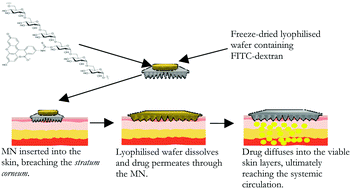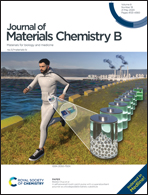Influence of molecular weight on transdermal delivery of model macromolecules using hydrogel-forming microneedles: potential to enhance the administration of novel low molecular weight biotherapeutics
Abstract
With a view to improve the current monoclonal antibody-based therapies dominating the pharmaceutical market, low molecular weight (MW) protein-based macromolecules, such as recombinant antibody fragments, typically within the range of 10–70 kDa, have been developed. Previously, our group successfully delivered Avastin®, a monoclonal antibody (mAb) across the skin using hydrogel-forming microneedles (MN). However, it is thought that this delivery system can be further enhanced using novel, lower MW biomolecules. To address this perception, in the current study, FITC–dextran of different MWs (10, 70 and 150 kDa) was used to model the transdermal delivery of low MW biotherapeutics and mAbs with MWs of approximately 150 kDa. Conversely, fluorescein sodium was the compound selected to model hydrophilic, low MW drugs. As expected, fluorescein sodium produced the greatest cumulative permeation (637.4 ± 42.69 μg). The amounts of FITC–dextran 10 kDa and 150 kDa which permeated across neonatal porcine skin in vitro were 462.17 ± 65.85 μg and 213.54 ± 15.19 μg after 24 h, respectively. The results collated here suggest that the delivery of emerging novel biotherapeutics, via ‘super swelling’ hydrogel-forming MNs, have the potential to result in greater permeation across human skin, compared to the delivery of mAbs delivered via the same route.



 Please wait while we load your content...
Please wait while we load your content...